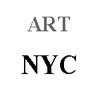Recently, celebrities have made active debuts as writers. Even Hollywood star Brad Pitt has put out a sculpture. Some people view these celebrities' debuts as writers from a lousy perspective. Actor Jungwoo Ha and broadcaster Solbi, who sold their works at a very high price at Christie's auction in Hong Kong, went to the Spanish art fair and won the award. Anyone can paint and hold an exhibition. There is no such thing as a license to open an exhibition.
Meanwhile, it is not easy for full-time artists to sell a single piece of work no matter how hard they work, but it is understandable that celebrities sell their careers so quickly on their backs. However, it is not easy to gain fame. Knowing how much time, effort, and money they invested in becoming famous, you won't be upset if they sold a few works at that price with fame. However, the artists are genuinely disturbed because they are worried that they will become famous or influence the art world with a few light works. This is all due to misunderstandings and concerns caused by not understanding the art market correctly. Writers and art lovers don't have to worry about celebrity writers who quickly sell their work with a few lightweight pieces and embellish the pages of a newspaper with the name of an artist. This is because the art world is not such a sloppy place.
Previously, we looked at the conditions of excellent artworks, periodicity, and workability. Let's substitute this with the workability of celebrity writers. Can you tell the difference? Art would not be art if you could understand art with a few pages of writing. I don't know whether that may be the honest answer. Naturally, the work quality seems to be good or not, and it isn't apparent. But, then, let's enter the market where they are in the spotlight, not the inner realm of the work. Gallery, art fairs, auctions, and so on are places that serve as markets in art. What does it mean to be in this market's spotlight or hot in it? It has always been at a time when money comes into the art market that a few lines in newspapers, a new artist's work is sold out at a gallery exhibition, and even a newly debuted artist is sold for hundreds of millions of won at overseas auctions. But where did all the writers go ten years ago? Why can't their work be seen now that the market is so good?
Well, this is what the market is. First, the artist is promoted in the gallery, which is the primary market. Plan exhibitions, encourage artists, and sell works. There is a crucial point here. It's not how much you sold; it's how much you sold. Sadly, if a new writer suddenly meets a famous Major gallery, starts with tens of thousands of dollars, and hits hundreds of millions, it is not easy to proceed with the following story. And if a large amount is not traded, there are not many works in the secondary market. To go from the primary call to the secondary market, about a few percent of the first-purchased collectors must put their works on the market during the next booming art market. Still, finding collectors who already pay high prices isn't easy. In addition, collectors have already been attracted to new artists with reasonable and sparkling prices. If the price is too high in the primary market, it becomes a handicap for the writer. But not everyone does, so let's not jump to conclusions about this either. Next is the secondary market. The economic cycle and the art market cycle naturally go together. When you enter a boom, auction houses always have record prices. As inflation rises, the cost of art also rises. The secondary market is a reselling market. In addition to auctions, it is a market priced only by the market's law of supply and demand, leaving the artist's arms entirely by trading between individuals, trading through dealers, and reselling the works in the gallery where they were purchased. The artist's work will finally debut if sold reasonably in this secondary market. It does not end with a single season of transactions, but when transactions occur continuously, a reliable market price occurs. If the price of this work is solidly formed and recognized by experts as a great work with quality and timeliness, the cost of this work will not fall. Of course, there may be ups and downs depending on the market situation, but if the internal value of the work is solid and the price in the market is supported, this work is now treated as money. People may wonder how to look at artworks only with cash. However, as we have seen so far, you may have noticed that making money for art is not very rusty and that the threshold is much higher than just the standard of evaluating good art. Money is the same as value. Of course, among the works displayed in the museum, there are cases in which works by an unknown artist who died early without leaving a few works decades after his death. The museum is where it plays that role. Apart from the market, historically essential works of art should be informed and introduced to people. However, to become rich through art investment, they seek to become rich through art investment. If a good work of art with workability and timeliness has representation recognized by the market, experts, and the public, the price of the work will already be inaccessible. Becoming wealthy through art investment aims to find out in advance what is truly valuable and collect at the seed stage.


